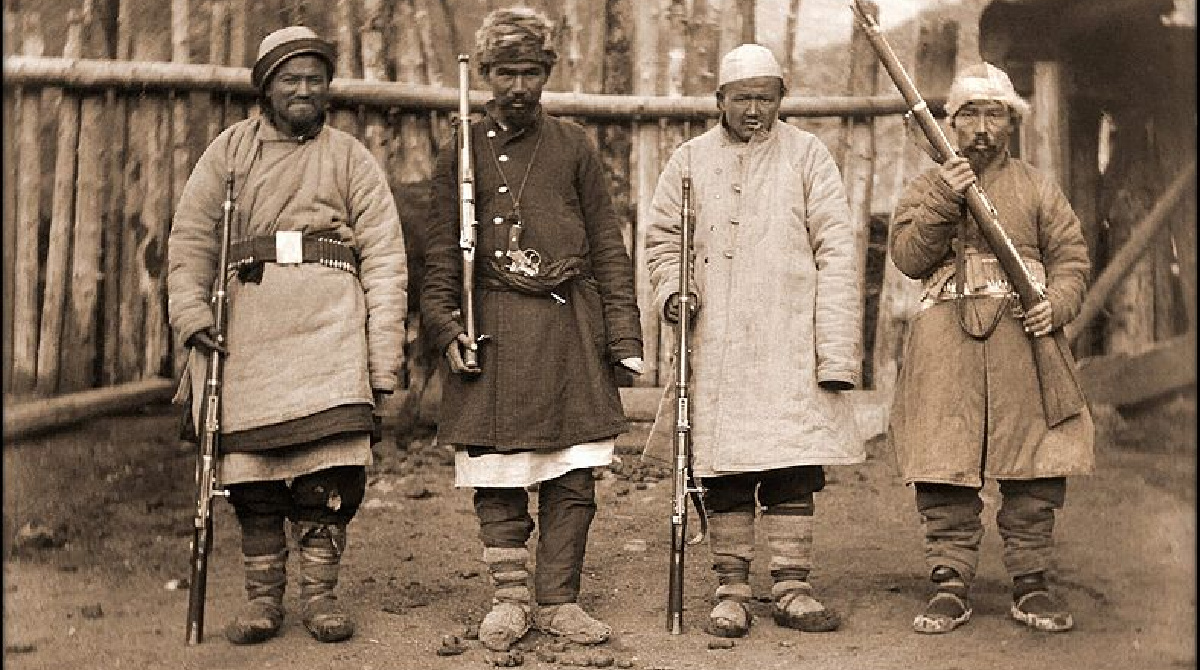The incendiary balloon of international law
For months now, Israel has been attacked by aerial incendiary weapons launched by Hamas during riots at the Gaza border fence.
These weapons – balloons or kites attached to flammable material – are driven by the winds off the sea towards southern Israel.
In just one week in June, they started nearly 100 fires in farmland and forests, in playgrounds and private yards. By last month, Hamas had burned more than 7,400 acres of Israeli land.
At the same time, Israeli communities near the border are also routinely attacked with rockets and mortars from terrorist groups stationed inside the Gaza Strip.
An American lawyer, Col. Matthew Aiesi, an associate professor at the Judge Advocate General’s Legal Center and School in Charlottesville, Va., was among a group of national security lawyers who recently witnessed these attacks for themselves.
As he has written, these are indisputably war crimes, violating numerous rules of warfare by deliberately targeting civilians and using indiscriminate weapons.
Aiesi says the United Nations or countries like Egypt working towards peace in the region should seek the surrender of those committing these war crimes to stand trial before a fair and competent jurisdiction.
Yet beyond Israel, these attacks are scarcely reported at all. And virtually no one is even stating that they are self-evidently war crimes.
The United Nations remains silent on the point. No surprise there: It has a long history of being institutionally malevolent towards Israel. Despite condemning it on countless occasions with spurious charges, the world body has never taken any action against the genocidal terrorists of Hamas.
Last December, the U.N. General Assembly rejected a U.S. resolution condemning Hamas for violence against Israel. Last March, a U.N. Human Rights Council report issued the mildest possible rebuke to the “de facto authorities in Gaza” responsible for “failing to take adequate measures to prevent incendiary kites and balloons from reaching Israel, spreading fear among civilians in Israel and inflicting damage on parks, fields, and property.”
This report was overwhelmingly devoted instead to the preposterous claim that Israel, not Hamas, was guilty of war crimes, asserting that the Gaza border riots were “civilian in nature, with clearly stated political aims.”
This even though some 80 percent of those killed by Israel during these riots were identified as terrorist operatives; not to mention the calls by Hamas to physically charge the border fence, attack with explosive devices both the fence and the Israeli soldiers guarding it, break through into Israeli territory, and attack and kill Israelis in towns and villages.
The U.N’s complicity with terrorism and aggression also extends to its refusal to take appropriate action against the Iranian regime.
Recently, Iran has been involved in multiple breaches of international law. In May, it attacked four tankers off the coast of the United Arab Emirates in a violation of UAE territorial space.
In June, it used explosives to sabotage two ships crossing the Gulf of Oman. A few weeks later, the Islamic Revolutionary Guard Corps released a video showing commandos in black ski masks and military fatigues descending from a helicopter to seize a British oil tanker in the Strait of Hormuz. Subsequently, the Iranians shot down an American drone over international waters.
As Dr. Majid Rafizadeh, president of the International American Council on the Middle East, has observed, Iran is clearly violating international law, specifically the U.N. Convention on the Law of the Sea to which it is a signatory.
The failure of the United Nations to enforce international law against such brazen aggressors indicates, however, something deeper than its endemic bias in favor of its non-aligned members and its resulting tendency to side with tyrannies and rogue regimes against those they want to destroy.
International human-rights law was developed by people who were appalled by the world’s paralysis in the face of antisemitic pogroms in Eastern Europe, through which several of them lived, followed by the Nazi Holocaust.
As detailed in James Loeffler’s riveting and important book, Rooted Cosmopolitans: Jews and Human Rights in the Twentieth Century, Jewish lawyers, jurists and other activists sought to fashion international human-rights law into a defense mechanism to protect powerless minorities.
The process through which it became a weapon to be used against the Jewish people is, as Loeffler recounts, a tragic history.
At its heart lay a fatal contradiction. Activists such as Hersch Lauterpacht, an eminent British lawyer who had been born in Lvov, and oil tycoon Jacob Blaustein, the legendary head of the American Jewish Committee, thought the way to save Jews and others from oppression by dictatorial regimes was to use international law to trump national sovereignty by holding oppressors to account through international tribunals.
Others, however, such as the Lithuanian-born lawyer Jacob Robinson, fruitlessly warned that for the Jewish people this was a trap. He understood it was only national sovereignty that would safeguard Diaspora Jews. “The basic guarantee of Jewish freedom is the democracy of the country where the Jews live,” he maintained.
He also understood that, by superseding national sovereignty, the universalist doctrine of human rights was innately hostile to Jewish particularism as expressed through the Zionist dream of recovering the Jewish national homeland.
As Loeffler relates, this fundamental flaw inevitably turned the United Nations – the designated vehicle of international human rights – into a mortal enemy of Zionism and the Jewish people.
In 1960 the Soviet Union, recognizing the opportunities offered to it by decolonization around the world, pushed through the United Nations a resolution that effectively turned international human rights from being a check on state power into a vehicle for anti-colonial nationalism, positioning the USSR as the leader of the global anti-colonialist movement.
This paved the way for what was described as “an all-out assault on Israel based on the theme of anti-colonialism.” In 1962, after an epidemic of swastikas appeared across Europe, an attempt to include antisemitism in the new U.N. anti-racism law was rebuffed by freshly independent African and Arab states.
These denounced “Zionist expansionism” as the antithesis of human rights and declared that any talk of antisemitism was a Zionist plot.
The stage was set for the increasing demonization of Israel tied to the dominance of international human rights doctrine, marked by the milestone 1975 U.N. resolution declaring “Zionism is a form of racism and racial discrimination.”
The world body turned into this Orwellian weapon against justice and the innocent because the pioneers of international human-rights law got a number of crucial things badly wrong.
They failed to grasp that the world was mainly composed of tyrannies, that these would therefore dominate the United Nations, and that antisemitism was a unique phenomenon that would never be eradicated.
They failed to grasp that the uniquely particularist Jewish people would always be in the crosshairs of a universalist ideology such as international human rights.
They failed to grasp that the key factor in any fight against tyranny or antisemitism is the will to engage in such a fight. Absent that, human-rights law is worse than useless; it provides an alibi for indifference and hands evil people a lethal weapon to use against the innocent.
In other words, the foundational ideas of international human-rights law have themselves acted as an incendiary balloon. They have created a global scorched wasteland of innumerable innocent victims before deflating into useless detritus, which remains unnoticed by those still blinded by a naive and self-destructive ideal.




